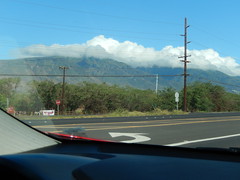See all Wildlife in Maui
Haleakala National Park
P.O. Box 369About
Haleakala National Park includes 28,655 acres, 19,270 of which are designated wilderness. The park preserves the outstanding features of Haleakala Crater, which include the unique and fragile ecosystems of Kipahulu Valley, the scenic pools along Ohe'o Gulch and many rare and endangered animal species. Hiking and walking are very popular within Haleakala National Park. In the Summit area two trails lead into the wilderness: Sliding Sands Trail and Halemau`u Trail. There are also many shorter trails available in this area. At Kipahulu, all trails start at the Ranger Station/Visitor Center. Picnicking, viewing historic sites and swimming are also popular activities in the Kipahulu area of the park. Both areas of the Park offer guided walks and programs on the geology and natural and cultural history of the area. A variety of camping opportunities are available at Haleakala National park. Hosmer Grove Campground and Kipahulu Campgrounds have picnic tables, barbecue grills and outdoor pit toilets. Two Wilderness campgrounds, Holua and Paliku, lie within the park boundaries. These sites are accessible by foot and contain primitive camping facilities without water. There are no open fires allowed in the Wilderness and a permit is required to camp within its boundaries. Three wilderness cabins are maintained by the National Park Service for visitor use by advanced reservation lottery. They are accessible by foot. At Kipahulu, a primitive campground near the ocean is available without a permit on a first come, first served basis. Stop at one of the several overlooks on the Park road or take a short walk away from the traffic noise to watch the clouds. The visual horizon in many places in the Summit area is up to 115 miles out to sea. Even cloudy skies can offer amazing sights including rainbows, moonbows and halos seen around your shadow. Haleakala offers one of the most easily accessible places to watch planets, stars and moons after dark. Several private companies operate tours within the Park. They include downhill biking on the Park road, horseback tours of the wilderness, and guided hikes. Check the yellow pages of the Maui phone book, the activities desks at hotels and resorts, or consult the Hawai`i Visitor's Bureau for information. Visitors to this island park can participate in a myriad of outdoor activities. At Park Headquarters, Haleakala Visitor Center and the Kipahulu Ranger Station/Visitor Center have cultural and natural history exhibits. Rangers are on duty during business hours to answer questions and help you make the most of your visit. The most popular activities in the park include backpacking, camping, hiking, horseback riding, nature walks, stargazing, swimming, wildlife viewing and viewing scenery. The Summit area of Haleakala is a three hour round trip drive from Kahului via roads 37, 377, and 378. Follow the signs posted along the Highway. The Kipahulu area of the Park is at the east end of Maui between Hana and Kaupo. It can be reached via Highway 36, a curvy, often wet road. Kipahulu is about 90 miles from the resort areas of Wailea or Kaanapali, and 60 miles from central Maui. Driving time is about 3-4 hours each way. An extension of this road, Highway 31, goes around the dry side of the island, past Kaupo and on to Ulupalakua. It is only partially paved and can be hazardous or closed during periods of stormy weather.
